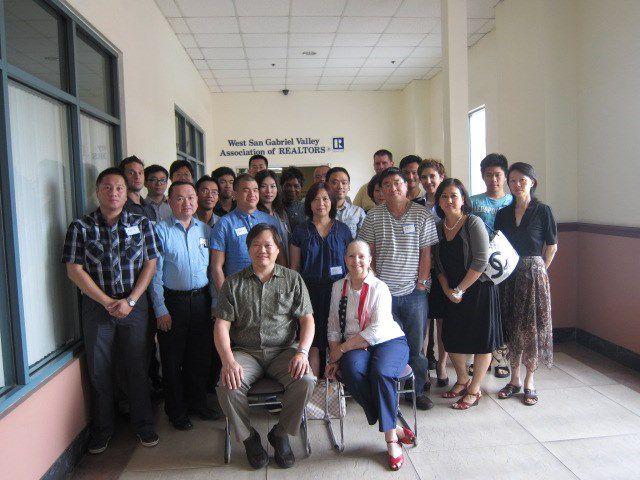
4 minute read
Affiliate Panel Discussions & New Member Orientations
from Fall 2013
by Albert Tran
We would like to recognize and give a special thanks to all of our affiliates who participated in leading panel discussions at our MLS Breakfast meetings this summer. Please remember your local affiliates during your transactions!
JUNE 2013
Advertisement
JULY 2013 AUGUST 2013
On June 27th Phoebe Lew, East West Bank; Patricia Chen, Chase Bank; Hilda Lee, Citibank; Emily Luan, Wells Fargo; Chris Huan, GEM Mortgage led a Lending Panel Discussion.

On July 25th Mary Kay Keshishian, Advance Group Property Inspection Company and Robert Thurman, California Gold Cost Home Inspections led a Home Inspection Panel Discussion.

On August 29th Gus Contreras, Golden Financial Insurance Services Inc. and Mark Wu, Allstate Insurance led an Insurance Panel Discussion.
New Member Orientations
July 2013 August 2013
Congratulations and welcome to all of our new West San Gabriel Valley Association of REALTORS® members! We are proud to have you here at WSGVAR.



Albert Tran, Executive Officer of WSGVAR since 2010, MBA, M.S., CIPS Conducting real estate business is getting easier every day. Thanks to the advent of technology, you can now work on real estate transactions from anywhere, anytime, and on any device. The real estate transaction consists of the finding of a property, prequalification, offer submission, counter and acceptance, inspections and appraisals, and pending and closing. With that said, today’s technology not only helps improve your ways of doing business, but also takes stress and guesswork out of the process for you, the buyers and sellers. Following are some online tools that can help you accelerate your transactions from start to finish.
Finding a Property The first step in a real estate transaction is finding a property that your clients are interested in buying. Not too long ago, you had to flip through a big Multiple Listing Services (MLS) book to find listings that fit your clients’ needs. Today, you can use CRMLS Matrix (crmls.org), HomeSeekers.com and REALTOR.com, or use iPhone or Android Apps (HomeSeekers or realtor.com) to search for properties in the right locations with great values and price ranges that would fit within your clients’ buying power. To save your clients’ time and money in the long run, you may conduct a thorough research on any property prior to scheduling a viewing of the home.
Prequalification You may contact a lender to conduct a prequalification for your buyers as to determine the maximum loan amount that they can afford before making an offer.
Offer Submission, Counter and Acceptance Once you have found a property that your clients would like to make an offer on, you will need to prepare a purchase agreement, Agency Disclosure forms, and any other related forms. Not too long ago, you had to fill out C.A.R. standard forms in paper format. Today, you can prepare the entire transaction with zipForm® Plus and/or zipForm® Mobile with e-Signatures* capability. Your clients can conveniently sign on his/her tablet or computer. Once signed, an e-mail will be sent to the listing agent for his/her review and signature. The listing agent will then submit the offer along with the disclosure forms and any related forms to his/her sellers. Once accepted, the listing agent will then open an escrow.
Inspections and Appraisals In California, a buyer has at least seventeen days from the date of acceptance to have inspections and appraisals performed. Based on the results of these inspections and appraisals, adjustments can be made to the property specific repairs requested. At the end of the contingency period, if all aspects are agreed upon and accepted by the buyers, the transaction will move forward into a pending status.
Pending and Closing During this pending stage, the lender is processing all finalized requested documents for the transaction and is preparing those documents for the escrow company. The escrow company will act as a third party to the transaction and will prepare all of the deed and finalized loan documentation as well as any necessary documents for the buyers and sellers of the property. At this time, the seller will sign the grant deed to the buyers, which is notarized by the escrow officer. Once all documents have been received by the escrow company, the buyer and seller are issued a clear to close on the property and can schedule a closing date.
Once the grant deed is recorded at the county, the escrow company will be notified with a confirmation number and the lender will wire the funds to the escrow company to complete the purchase. The escrow company will disburse the money accordingly to the seller and any parties involved in the transaction. At this point, the home has now transferred ownership from seller to buyer and the buyer will receive their keys, and the transaction is considered closed.
At the end of the day, technology helps real estate professionals improve the process, but they should not forget about the relationship between themselves and their clients and should continue building relationships with them.
* WSGVAR members can access zipForm® Mobile Web Edition at no charge. zipForm® Mobile Web Edition is the on-the-go companion application to zipForm® Plus - allowing you to keep important real estate transactions readily available from your tablet! Click Here for more information.













